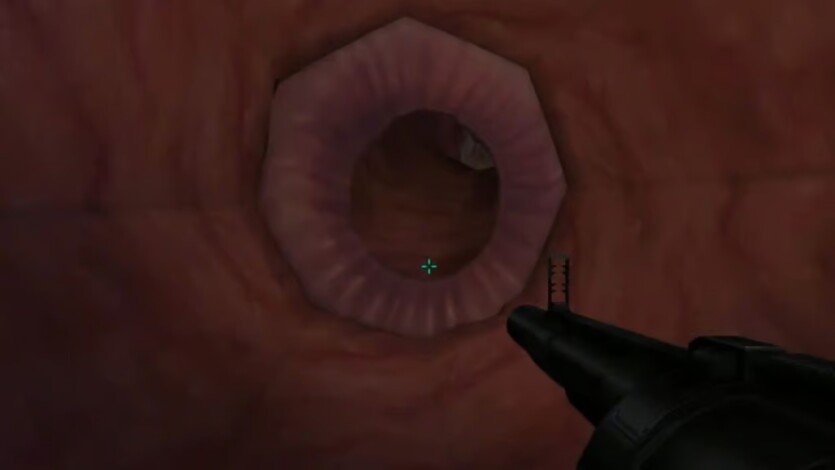
Old school horror artist Nate Wells admitted that the name of the “sphincter door” textures is not just a metaphor — they were created from a real colonoscopy recording.
The 1990s was truly magical: developers not only put their souls into the project, but also… their inner world. System Shock 2’s artist shared that the team couldn’t find a texture for the “sphincter door”. While the designers were looking for references to create the biological environment of The Many — alien creature, producer Josh Randall was at the doctor’s office.
“I think I was searching through a bunch of gross biological endoscopy sort of stuff, and Josh Randall approached me, and said he had a video of his colonoscopy”, — Nate Wells recalls.
So instead of watching disgusting endoscopy images, the artist turned his working day into studying his colleague’s intimate shots. The man transferred one of the images to Photoshop and used it as the basis for the texture of the “sphincter door” — a characteristic biomechanical element in the later stages of the game.
“There’s a lot of alteration to it, but if you look at those doors… you’re seeing audio genius Josh Randall’s colon”, — he added.

This door appears in the levels where players enter the body of The Many — the collective mind that has infected the Von Braun ship. In contrast to the sterile corridors of the previous levels, this part of the game has an organic, fleshy design that makes you feel uncomfortable. And although the decision to use real medical footage might seem atypical, it helped create the most realistic environment possible. This part of System Shock 2 is often mentioned as one of the creepiest in the game.
System Shock 2 was released in 1999 and is still considered a cult sci-fi horror game. After it, Nate Wells joined the development of the cult BioShock and The Last of Us. By the way, The Last of Us Part 2 has recently added chronological mode without flashbacks and skins from Uncharted.
Source: Dexerto

Spelling error report
The following text will be sent to our editors: